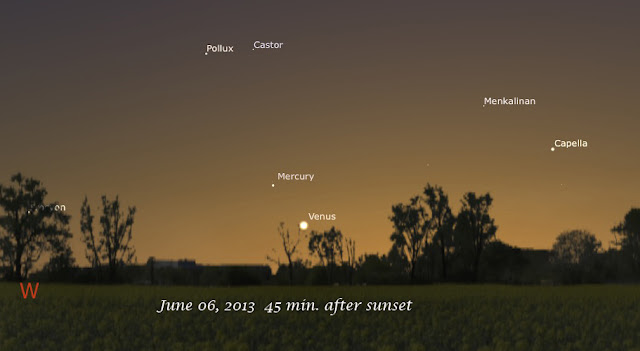My wife and I went back to Michigan recently for my sister's wedding and during our stay we had a couple nights that were both dark and clear. Since it was right around the peak of the Delta Aquariid meteor shower, I thought I'd take my Canon Rebel T3i out and try to do some Milky Way photography with the hopes of catching a meteor.
Standing under those twinkling stars, with the great Milky Way arching overhead and no Moon in sight, I had high hopes. Almost as soon as I stepped out I saw a meteor flash through the Milky Way. Although its path told me that it wasn't a Delta Aquariid meteor, my first thought: "This is going to be a good night."
Setting up my tripod, I spent a few minutes focusing the camera. While I'm still not sure if I'm getting it perfectly focused, I'm getting better at it than I was when first using the camera. It turns out that when there's nothing bright to use for focusing, getting nice sharp stars is difficult. However, after a few minutes I was satisfied so I set up pointed at the Galactic center, just above the treeline, and began taking 20-second exposures at ISO 1600. ISO 3200 made the image too noisy. I had the aperture down to f/8, but the treeline was fairly nearby and I didn't want it completely fuzzy just so I could have an f/3 aperture. I wish I knew how the
professionals got such sharp horizon features. But I guess this isn't bad.
After some waiting and snapping, I spotted a small meteor flash through the area of the sky I was imaging! I paused to check the image to see if I had captured it. No. Huh...I guess it was too faint. I learned quickly that not every meteor that you see makes it into the picture. This means that the images from the more skilled astrophotographers show meteors that must have been
really bright! I clicked on.
Another flash, this one brighter but shorter in length! I checked the image, and sure enough - I got it!
I clicked away some more, turning the camera occasionally more east and upward, then back to the Galactic center. After taking so many images of the same scene, some pretty neat things can be done with them, like stacking images together to bring out greater detail (notice how there are more stars):
and even making star trails set against a Galactic backdrop:
I finished the evening around 12:30 (though this is actually when I should have started, no doubt) and went to bed, uncertain about whether I had captured any more meteors or not. I sure saw my fair share, though.
Upon looking through the images on my computer, I learned that not only are meteors tricky to catch, but catching other things can be tricky too. For example, I came across one image with a streak that I thought was certainly a meteor. However, after looking at the next frame, I noticed a similar streak in a slightly different location. The next frame showed the same thing:
I had captured a satellite, too dim for me to have noticed it while shooting but right there in plain sight on the image. Silly. After looking through all my images, I came across one more faint meteor, though this one took some heavy image processing to bring out:
I probably spent about an hour and a half, so to get two meteor images against a nice Milky Way background is great. While I saw no fireballs, I probably could have stayed up longer if I really wanted to try for a nice image. While packing up at the end of my shoot, I noticed that my lens had fogged up with dew, so I'll have to remember that for next time.
Next time! The Perseid meteor shower is coming up in a few days - peaking overnight on Aug 11/12. Meteor activity is
already ramping up, so I'm looking forward to it. That is, if Oneonta gives us clear skies. Keep your fingers crossed! If it's clear, I'll be outside once again, giving the astrophotography thing another shot. If you'd like to simply enjoy the sight, face northeast around 11 p.m. and look about halfway up (you may want a lawn chair to sit on or a blanket to lay on). Pay attention with your peripheral vision, too. The show should only get better after midnight.
Happy viewing!






















